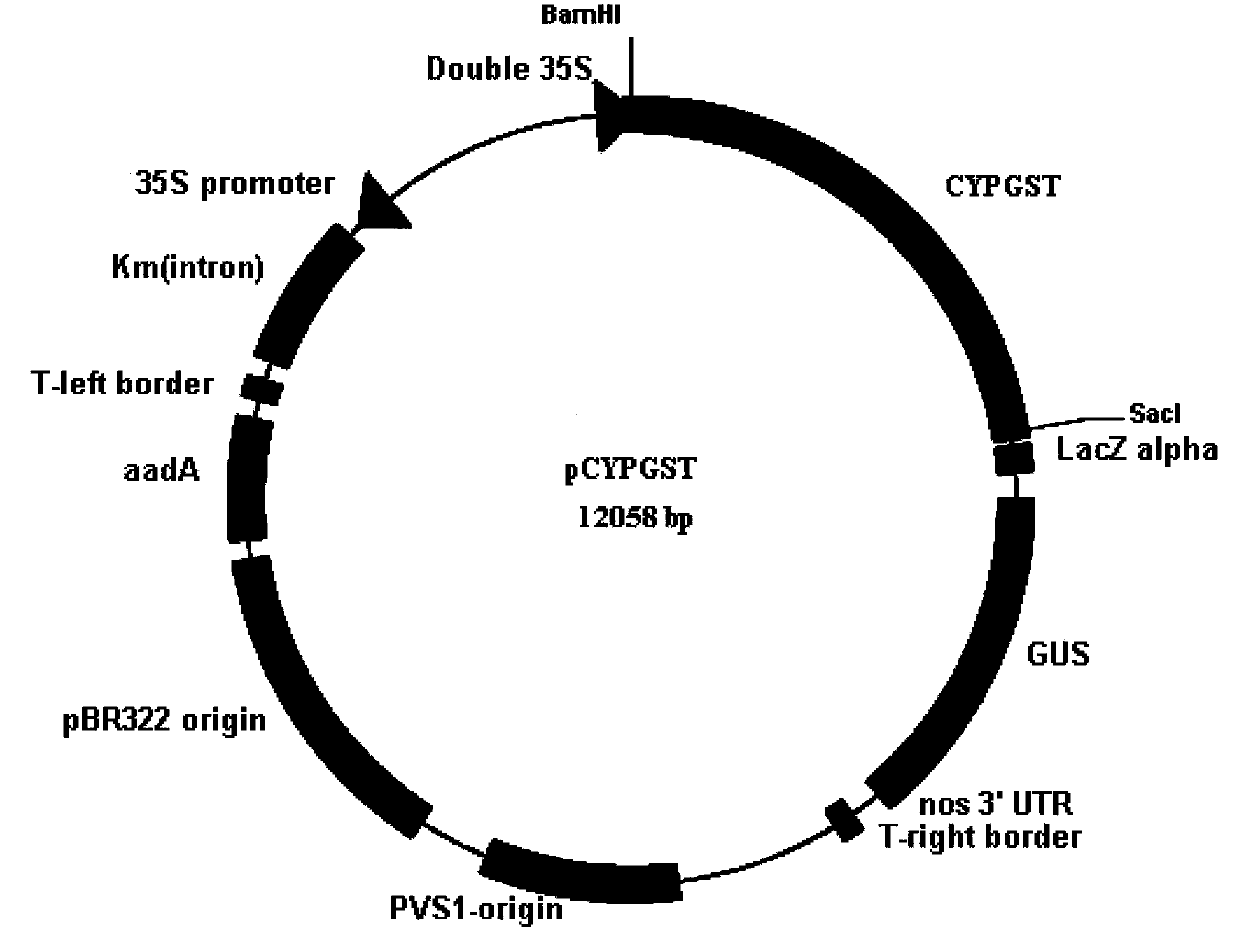Method for improving degradation ability of transgenic plants to polycyclic aromatic hydrocarbons
A technology of transgenic plants and polycyclic aromatic hydrocarbons, applied in the fields of botany equipment and methods, biochemical equipment and methods, plant products, etc., can solve the problems of weak hydroxylation of polycyclic aromatic hydrocarbons and low degradation ability of polycyclic aromatic hydrocarbons, and achieve Effects of less environmental impact, improved tolerance and degradability
- Summary
- Abstract
- Description
- Claims
- Application Information
AI Technical Summary
Problems solved by technology
Method used
Image
Examples
Embodiment 1
[0062] Example 1, Effects of Transgenic Arabidopsis on Phenanthrene and Pyrene Tolerance and Degradability
[0063] 1) Preparation of Agrobacterium Competent Cells
[0064] The Agrobacterium strain is Agrobacterium tumefaciens EHA105, or LBA4404, or GV3101 strain (Biovector Co., LTD). Pick a single bacterium and culture it overnight in 25ml YEB medium (added with 50mg / l rifampicin), transfer 5ml of the bacterial liquid to 100ml YEB medium (added with 50mg / l rifampicin), and cultivate to OD600=0.7-0.8, Place the bacterial solution on ice for 10 minutes, centrifuge at 5000rpm for 10min, 4°C, collect the bacterial cells, add 100ml sterile double distilled water to wash twice. Add 4ml of 10% glycerol to suspend the bacteria and transfer to a 50ml centrifuge tube. Centrifuge at 5500rpm for 10min at 4°C. Collect the bacteria, add 500μl 10% glycerol to suspend the bacteria, and transfer to a 1.5ml centrifuge tube.
[0065] 2) The bivalent gene plant expression vector pCYPGST was ...
Embodiment 2
[0078] Embodiment 2, the impact of transgenic rice on the degradation ability of phenanthrene and pyrene
[0079] 1) Agrobacterium-mediated transformation of rice
[0080] The rice callus was transformed with the Agrobacterium strain containing the expression vector pCYPGST obtained in step 2) of Example 1. N6 medium is the basic medium, shelled rice seeds, and immature embryos 12-15 days after pollination are surface-sterilized and inoculated into N6D2 medium to induce callus (N6 medium, hydrolyzed milk protein 500mg / L, Sucrose 30g / L, 2,4-D2mg / L, Phytogel 2.5g / L, pH 5.8); after 4-7 days of culture, callus was taken for transformation. After the Agrobacterium containing the expression vector pCYPGST was cultured at OD0.8-1.0, centrifuge at 5000g for 8 minutes, wash once with reconstituted water, suspend and infect with an equal volume of MS culture medium for 8 minutes, and blot dry the culture medium placed in MSO+NAA1+BA2 in 22°C for 3 days. Then transfer to selection med...
PUM
 Login to View More
Login to View More Abstract
Description
Claims
Application Information
 Login to View More
Login to View More - R&D
- Intellectual Property
- Life Sciences
- Materials
- Tech Scout
- Unparalleled Data Quality
- Higher Quality Content
- 60% Fewer Hallucinations
Browse by: Latest US Patents, China's latest patents, Technical Efficacy Thesaurus, Application Domain, Technology Topic, Popular Technical Reports.
© 2025 PatSnap. All rights reserved.Legal|Privacy policy|Modern Slavery Act Transparency Statement|Sitemap|About US| Contact US: help@patsnap.com



